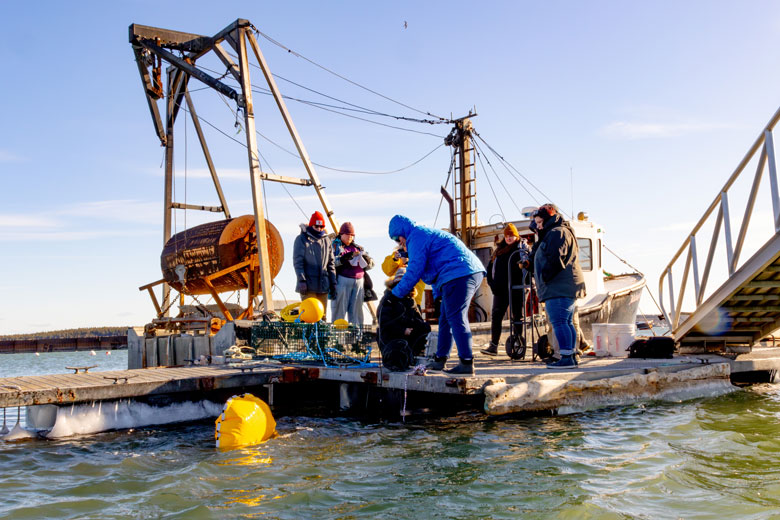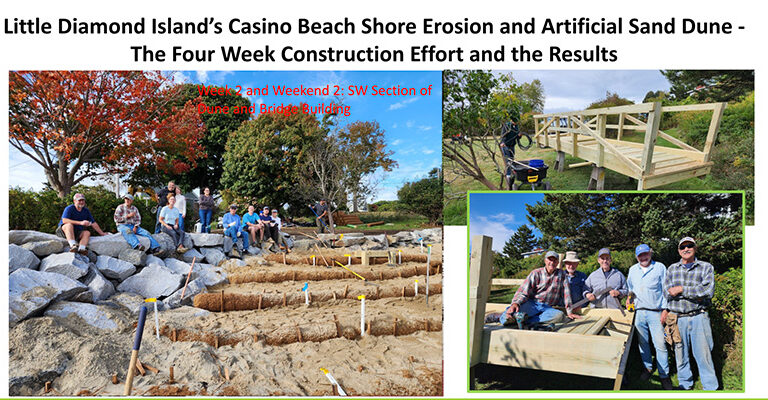As temperatures warm, the Maine lobster season is beginning in earnest. The fishery, one of the strongest remaining owner-operator in the world, known for its adaptability and heritage, has seen its share of change.
Today the industry finds itself on the cusp of another possible change with the introduction of experimental fishing gear. On-demand gear has the potential to allow fishermen access to areas that may become closed to vertical lines.
This year’s fishing season will mark the second year of testing in Maine for a new type of technology known as on-demand gear. It’s also referred to as ropeless, on-call, pop up, alternative, innovative, or buoyless.
This technology replaces traditional rope endlines with a release mechanism that causes the trap to rise to the surface when being hauled. The goal is to keep the water column free from ropes that pose an entanglement risk to large whales, primarily the endangered North Atlantic right whale.
Fishermen’s testing is critical. It will help determine impact on profitability.
On-demand gear uses a piece of equipment added to the end of a trawl (multiple lobster traps strung together) with two main components—a retrieval mechanism like stowed rope (a stored coil of rope long enough to reach the surface) or an inflatable lift bag, and an acoustic technology component which allows the equipment to communicate with software on a tablet or cell phone and an acoustic receiver on board the boat.
In January, the NOAA’s Northeast Fisheries Science Center published the latest on-demand gear guide, detailing current understanding and the work needed for on-demand gear, based on testing since 2018. Additionally, in the summer of 2024, the state Department of Marine Resources began a coast-wide effort to engage the lobster industry in testing on-demand gear.
Gear reliability is a primary concern—understanding how often it successfully deploys and how often it takes multiple attempts to get the gear to the surface. NEFSC’s gear library has shown increase in reliability, from 63% in 2020 to 91% in 2024, across all fisheries. The early testing done in Maine shows some need for fishermen to repeatedly send out a release ping. Additional testing is ongoing to get a clear understanding of the frequency.
Fishermen’s testing is critical. It will help determine how long it takes to retrieve gear, how that would impact time spent on the water, and impact on their profitability.
Data collected from gear failures is important, too. It brings insight into mechanical failures such as rope tangles, or technical failures such as drained batteries.

Real-world solutions for retrieving broken or damaged gear are another concern, particularly in understanding how effective gear recovery options would be in deeper, offshore fishing operations. Gear loss expectations would need to be in line with current expected rates, ideally reducing the amount of gear lost.
Gear marking and gear location are other important issues that being addressed. Gear marking, or marking on a chart where the gear is, is mostly done manually by pressing a button when the gear is deployed. But manufacturers are working on technologies that could better identify where the gear rests on the bottom.
Gear location, or how fishermen detect on-demand gear, is currently limited. A variety of approaches are being researched, and ensuring there is a universal, accessible, widely utilized system for all fishermen to know exact locations for gear is critical to avoiding conflict and gear loss.
Ensuring that concerns from regulators, law enforcement, and fishing industries are heard and addressed has been an ongoing effort, with more developments expected in the coming months in anticipation of the upcoming round of whale entanglement risk reduction measures.
Kristin Garabedian is a community development officer with Island Institute, publisher of The Working Waterfront. She works in the Center for the Marine Economy with a focus on innovative fishing gear. She may be contacted at kgarabedian@islandinstitute.org.





